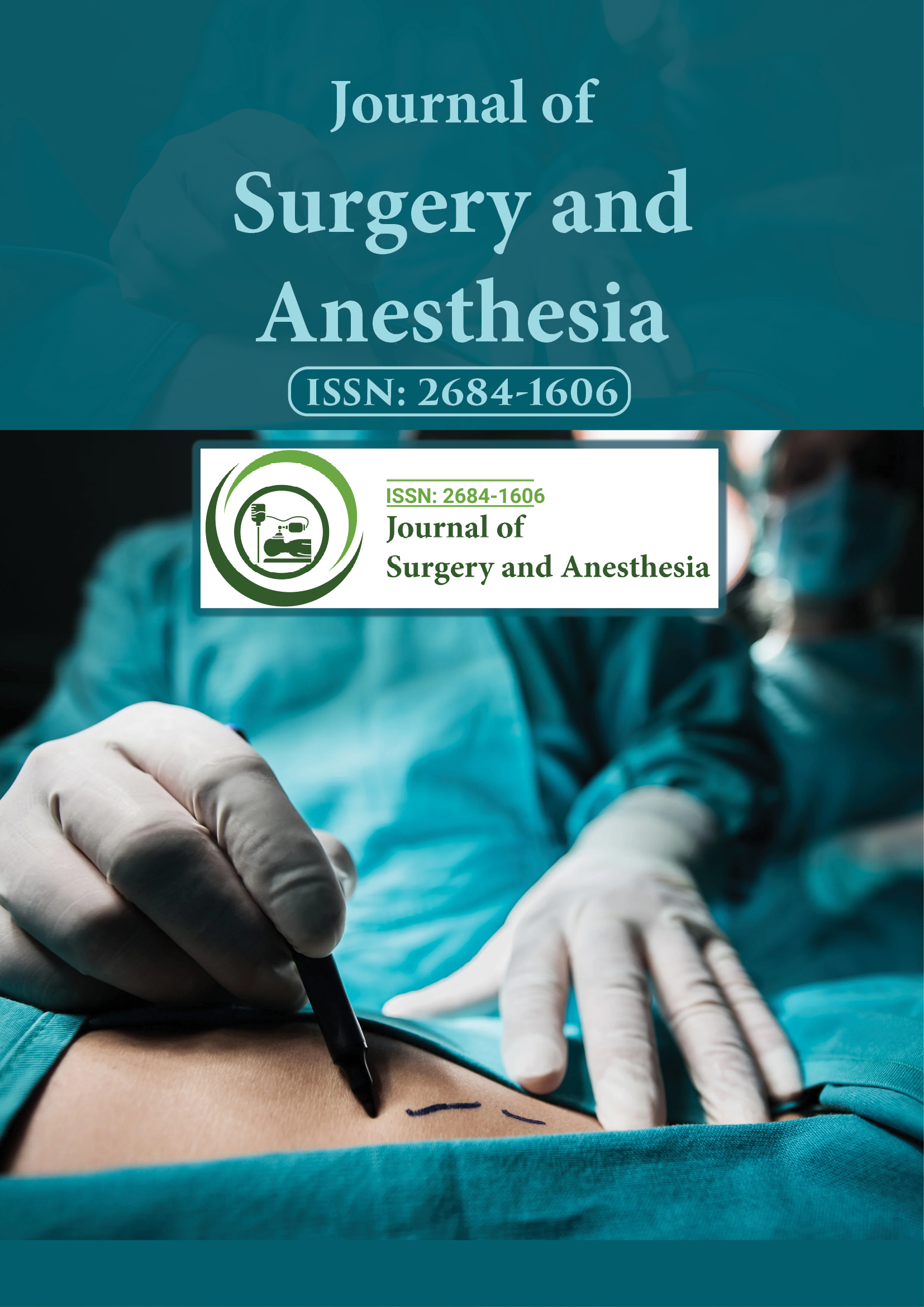Indexed In
- Google Scholar
Useful Links
Share This Page
Journal Flyer

Open Access Journals
- Agri and Aquaculture
- Biochemistry
- Bioinformatics & Systems Biology
- Business & Management
- Chemistry
- Clinical Sciences
- Engineering
- Food & Nutrition
- General Science
- Genetics & Molecular Biology
- Immunology & Microbiology
- Medical Sciences
- Neuroscience & Psychology
- Nursing & Health Care
- Pharmaceutical Sciences
Editorial - (2021) Volume 5, Issue 3
COVID-19 and Anesthesia Department
Mark Seamon*Received: 06-Apr-2021 Published: 27-Apr-2021, DOI: 10.35248/2684-1606.21.5.e146
Description
The Coronavirus infectious disease 2019 (COVID-19) brings anesthesiologists and intensive care physicians to the mainstay of clinical workload and healthcare management’s focus. The current coronavirus infectious disease 2019 (COVID-19) pandemic brings many challenges to the healthcare system. Since COVID-19 is primarily a respiratory disease, it often leads to respiratory failure, prolonged dependency on mechanical ventilation, and need for high intensity medical care. Anesthesiologists are considered experts in airway management, mechanical ventilation, and intensive care. Anesthesiologists played a critical role in the COVID-19 crisis which is well appreciated.
Risk to clinicians during aerosol generating procedures
Tracheal intubation and extubation may be high-risk procedures for aerosol generation and for transmission of COVID-19, particularly if the patient coughs. Other aerosol-generating procedures that may involve anesthesia care include bag mask ventilation, jet ventilation with an open airway, bronchoscopy and interventional pulmonology procedures, noninvasive ventilation, administration of high-flow oxygen or nebulized medications, tracheostomy, open suctioning of airways, upper endoscopy, colonoscopy, and transesophageal echocardiography.
Protective barriers
A wide variety of prototype devices have been created to protect the anesthesiologist from droplet or aerosol contamination during intubation and extubation. Clinicians should always use full PPE during airway management, whether or not a protective barrier is used. Contributors to this topic do not routinely use these devices.
As a general rule, only necessary equipment should be in the Operating Room (OR) during aerosol-generating procedures in patients with COVID-19, to prevent unnecessary contamination and need for disinfection. Backup or emergency equipment should be kept immediately outside the room and brought in as required by an assistant who is wearing appropriate PPE. The anesthesia machine and reusable equipment, meticulous routine cleaning should be performed according to manufacturer’s recommendations. Disposables, including the anesthesia breathing circuit, reservoir bag, mask, forced air warming blanket, and any other disposable equipment should be bagged for disposal as contaminated waste. The gas sampling tubing should be changed after use in a COVID-19 positive patient.
Regional anesthesia (neuraxial anesthesia, peripheral nerve block) is not contraindicated in patients with COVID-19. The use of regional anesthesia may avoid the need for general anesthesia, airway management, and the associated risk of aerosolization of airway secretions. Unplanned conversion from regional anesthesia to general anesthesia should be avoided if at all possible. The decision to perform surgery with regional anesthesia alone should be considered carefully and discussed with the surgeon, including whether conversion to general anesthesia might be required.
Patients should wear a surgical mask whenever they are transported within a medical facility. Patients should ideally be transported directly to a procedure or Operating Room (OR), bypassing the holding area or pre-induction area. Some institutions use a portable tent system with HEPA filtration during transport for patients with COVID-19 Precautions have been recommended for anesthesiologists which include meticulous hand hygiene, and the use of contact, droplet, and airborne precautions, depending partly on the risk of aerosolization of the virus (i.e., during aerosol-generating procedures).Goals for infection control during anesthesia include prevention of transmission of infection to care providers, and prevention of contamination of the anesthesia machine and other anesthesia equipment. Infection control measures should be the same for patients with suspected or confirmed COVID-19.
Citation: Seamon M (2021) COVID-19 and Anesthesisa Department. J Surg Anesth. 5:e146.
Copyright: © 2021 Seamon M. This is an open-access article distributed under the terms of the Creative Commons Attribution License, which permits unrestricted use, distribution, and reproduction in any medium, provided the original author and source are credited.
